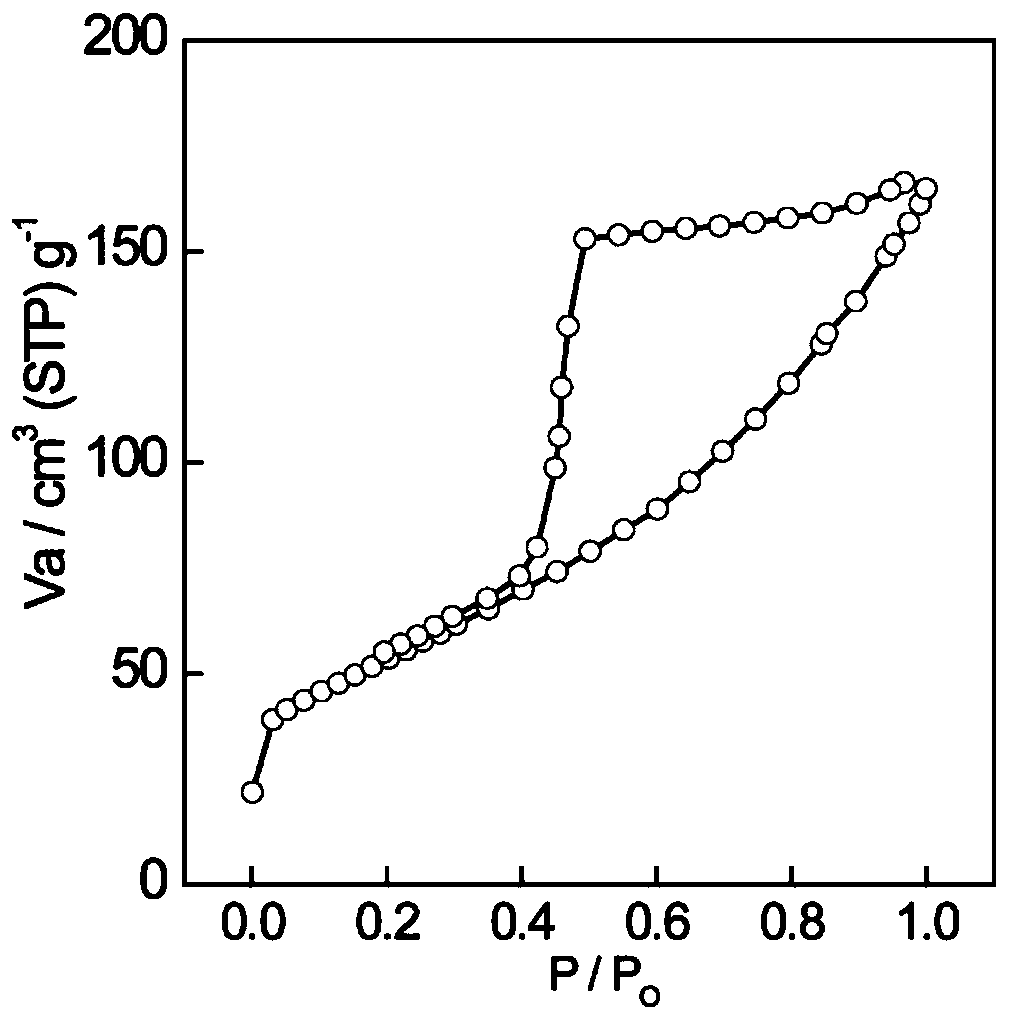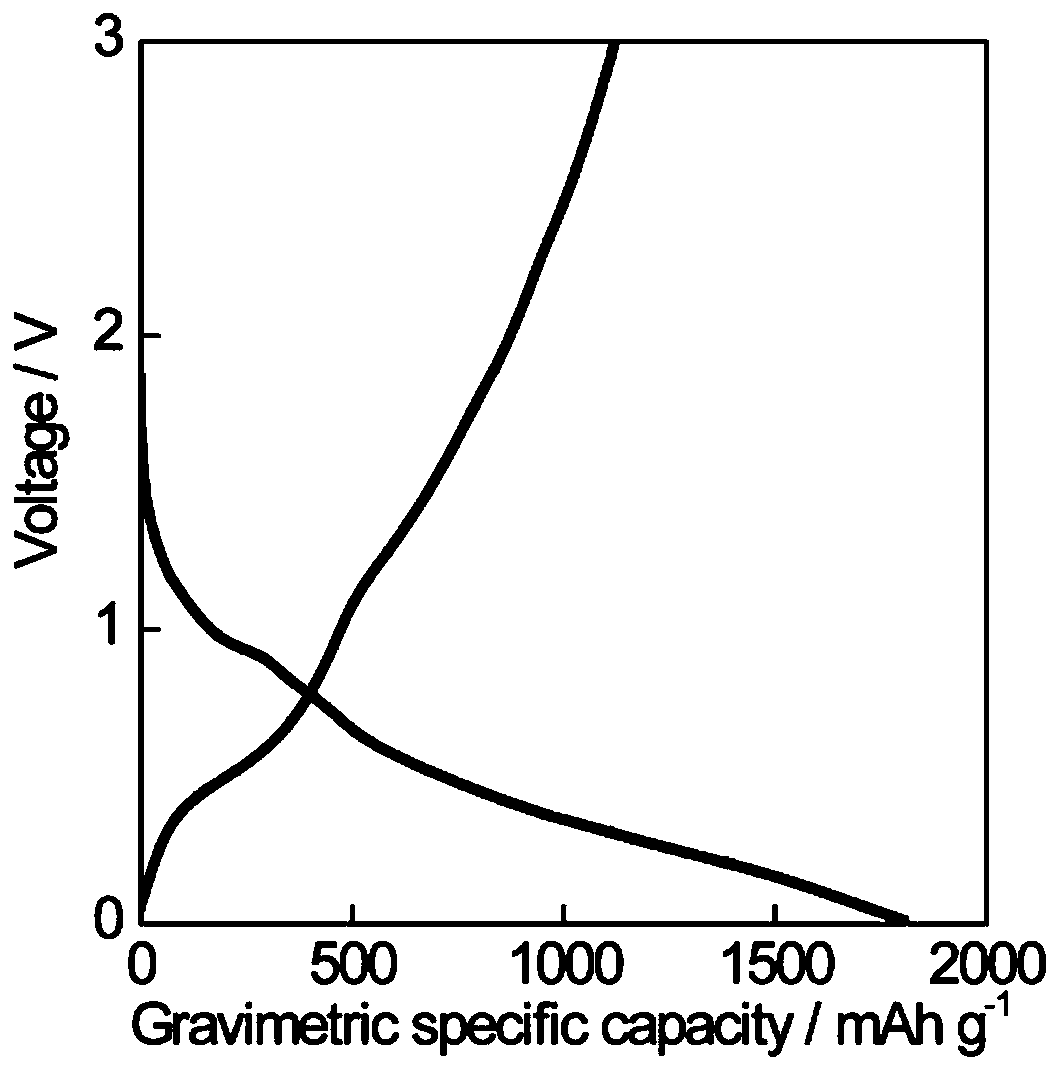A kind of graphene-based lithium-ion battery negative electrode material
A negative electrode material, ion battery technology, applied in battery electrodes, secondary batteries, circuits, etc., can solve the problems that affect the quality and performance of composite materials, cannot fully meet the volume expansion of non-carbon active materials, and reduce the volume performance of negative electrode materials. To ensure the electronic conductivity, the preparation process is green and pollution-free, and the cycle performance is improved.
- Summary
- Abstract
- Description
- Claims
- Application Information
AI Technical Summary
Problems solved by technology
Method used
Image
Examples
Embodiment 1
[0036] This embodiment provides a graphene-based lithium-ion battery negative electrode material, the negative electrode material is a three-dimensional porous graphene-non-carbon material composite electrode material, which includes three-dimensional porous graphene and a non-carbon material loaded on the three-dimensional porous graphene, The negative electrode material has a rich pore structure, and its specific surface area is 191m 2 / g, the pore volume is 0.25cm 3 / g, the bulk density is 2.18g / cm 3 , and the sum of the volumes of the pores in the negative electrode material is 2.59 times the sum of the volumes of the non-carbon materials.
[0037] Among them, the non-carbon material is tin dioxide, and the mass ratio of three-dimensional porous graphene to tin dioxide is 1:2.
[0038] The preparation method of the negative electrode material at least comprises the following steps:
[0039] In the first step, take 78.5mL of 2mg / mL graphene oxide dispersion and place it ...
Embodiment 2
[0047] The difference with embodiment 1 is:
[0048] The specific surface area of the three-dimensional porous graphene-tin dioxide composite electrode material is 256 m 2 / g, the pore volume is 0.19cm 3 / g, the block density is 2.46g / cm 3 , and the sum of the volumes of the pores in the negative electrode material is 1.98 times the sum of the volumes of the non-carbon materials.
[0049] Among them, the non-carbon material is tin dioxide, and the mass ratio of three-dimensional porous graphene to tin dioxide is 1:2.
[0050] In the preparation method of this negative electrode material, the consumption of graphene oxide dispersion liquid is adjusted to 83.5mL, Na 2 S 2 o 3 ·5H 2 The consumption of O is adjusted to 0.10g, and the consumption of hydrochloric acid is adjusted to 1.5mL, and the rest are the same as in Example 1, and will not be repeated here.
Embodiment 3
[0052] The difference with embodiment 1 is:
[0053] The specific surface area of the three-dimensional porous graphene-tin dioxide composite electrode material is 228m 2 / g, the pore volume is 0.21cm 3 / g, the bulk density is 2.32g / cm 3 , and the sum of the volumes of the pores in the negative electrode material is 2.25 times the sum of the volumes of the non-carbon materials.
[0054] Among them, the non-carbon material is tin dioxide, and the mass ratio of three-dimensional porous graphene to tin dioxide is 1:2.
[0055] In the preparation method of this negative electrode material, the consumption of graphene oxide dispersion liquid is adjusted to 82.5mL, Na 2 S 2 o 3 ·5H 2 The amount of O was adjusted to 0.21g, and the amount of hydrochloric acid was adjusted to 2.5mL. The rest are the same as in Embodiment 1, and will not be repeated here.
PUM
| Property | Measurement | Unit |
|---|---|---|
| specific surface area | aaaaa | aaaaa |
| density | aaaaa | aaaaa |
| concentration | aaaaa | aaaaa |
Abstract
Description
Claims
Application Information
 Login to View More
Login to View More - R&D
- Intellectual Property
- Life Sciences
- Materials
- Tech Scout
- Unparalleled Data Quality
- Higher Quality Content
- 60% Fewer Hallucinations
Browse by: Latest US Patents, China's latest patents, Technical Efficacy Thesaurus, Application Domain, Technology Topic, Popular Technical Reports.
© 2025 PatSnap. All rights reserved.Legal|Privacy policy|Modern Slavery Act Transparency Statement|Sitemap|About US| Contact US: help@patsnap.com



